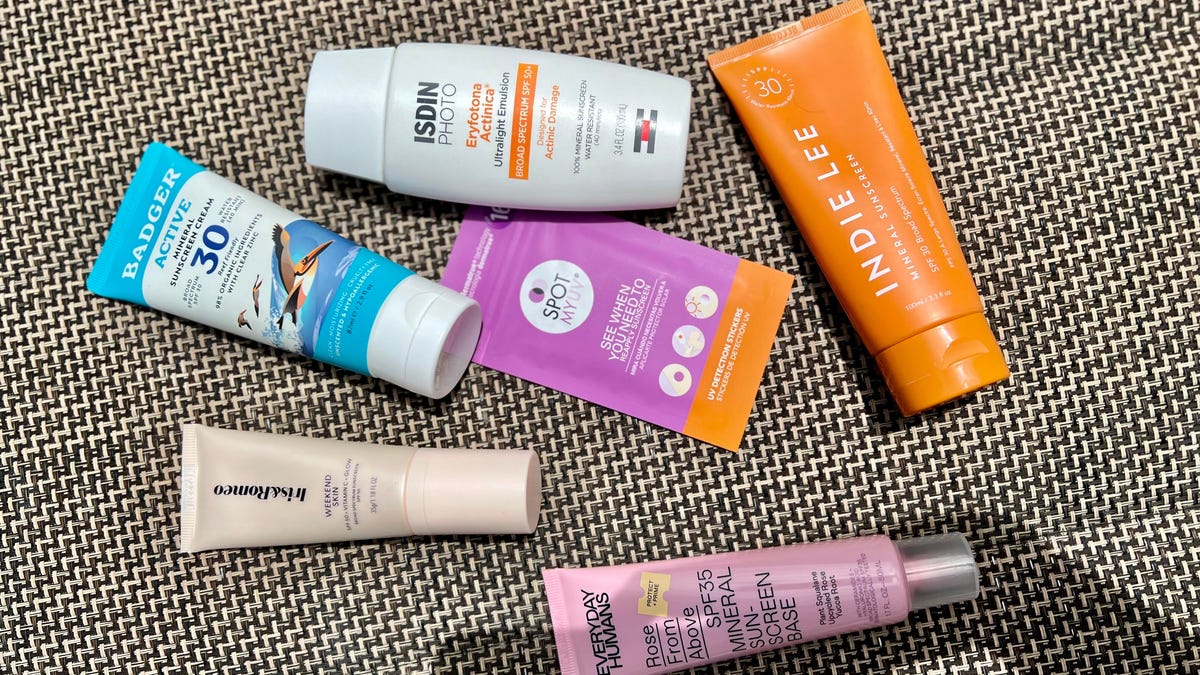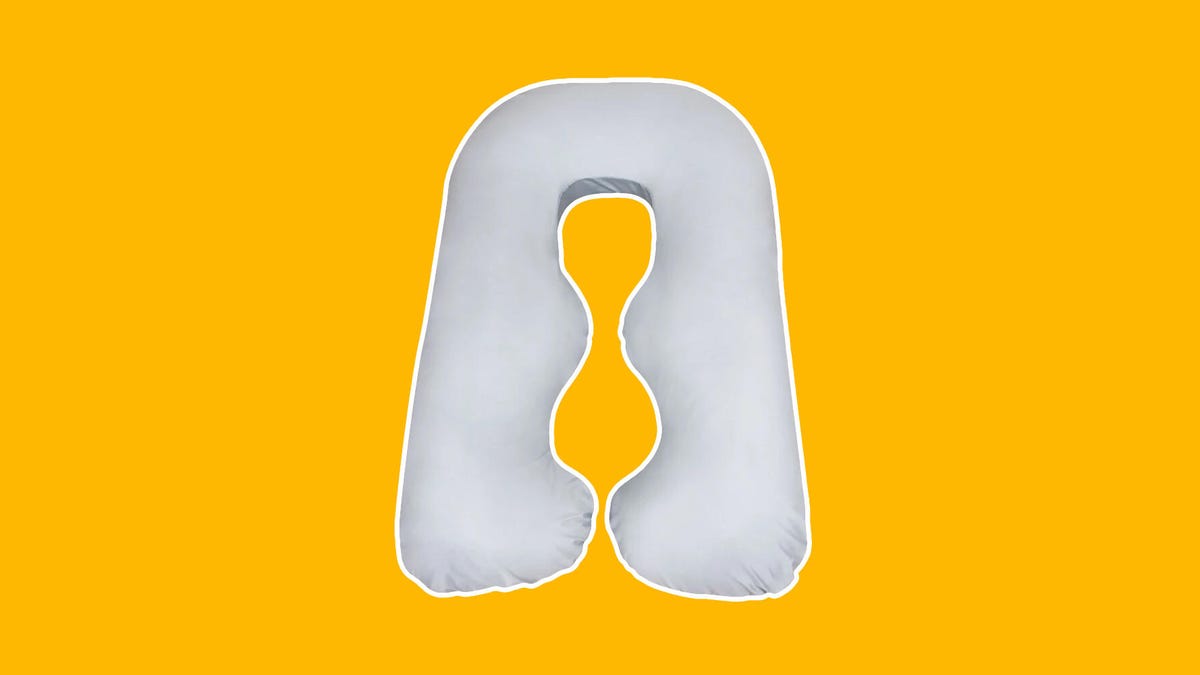Remind Yourself to Reapply Your Sunscreen This Summer With These UV Stickers

This summer, you need to remember to reapply your sunscreen. Wearing sunscreen is crucial to protect your skin from harmful UV rays. Experts agree that you should reapply your sunscreen every two hours, possibly sooner if you’re swimming or sweating outside. Sometimes, this can be hard to keep track of, but there are new UV stickers that claim to help you remember.
I tested a few UV sticker brands that help you know when your sunscreen has stopped protecting you. To get the most accurate results, I tested these UV stickers with different types of sunscreens (mineral, chemical and combinations of both). The results were unexpected. Keep reading to find out what you should know about reapplying sunscreen and what to expect when using UV stickers.
What are UV stickers?
UV stickers detect ultraviolet radiation from the sun. When sunscreen is applied over the sticker, it should turn clear, meaning you are protected from harmful rays. Stickers that turn purple alert you that you have lost that protection and must reapply sunscreen. The idea is that these stickers will tell you when you need to reapply long before you are alerted the old fashion way — a burning, red sunburn.
I tested UV stickers from SpotMyUV. They are readily available on Amazon and Target for around $15. It should be noted that I first tested UVIFY UV Stickers, a budget alternative to SpotMyUV. Those stickers didn’t work for me and wouldn’t turn clear, even after multiple layers of sunscreen. Thankfully, SpotMyUV stickers turned colors for me.
Remind yourself to reapply your sunscreen.
SpotMyUV stickers don’t necessarily test the effectiveness of your sunscreen or the SPF level. That is left up to high-tech, specialty labs. It can, however, tell you when your sunscreen is no longer protecting you or not protecting you as well.
How do you use UV stickers?
I tested these on my sunny balcony.
I followed the directions on the back of the pouch. First, lift the stickers off from the paper and apply them to your upper arm or other skin that is exposed to the sun. Then cover your exposed skin and sticker with sunscreen, wait 30 seconds and gently rub the sunscreen in. After a minute in the sun (or longer if there is cloud coverage), the stickers should turn from a dark purple to clear. A clear sticker means that you are protected.
In my own experiment, I applied a tester to my upper arm and then four stickers to my upper legs. I then waited 30 seconds to let the sunscreen absorb before rubbing it in. However, I have seen on TikTok that some wait a full 15 minutes before rubbing in the sunscreen and going outside. Regardless, I believe we got similar results.
Evaluating my own UV stickers under the sun
I tested these SpotMyUV stickers on a hot day when the UV was nine and there was minimal cloud coverage. During my 2-hour-long experiment, I sat out in the sun on my balcony and took my dog for a walk.
I tested four different sunscreen brands with four detection stickers. Two sunscreens were chemical, one was mineral and the last sunscreen was a combination of both mineral and chemical.
Chemical sunscreen
I covered the top left UV sticker with Supergoop! Unseen sunscreen. It contains avobenzone, homosalate, octisalate and octocrylene and has an SPF of 40. This sunscreen is a little different than most chemical sunscreens, because it is sheer and light. I was interested to see if this formula would still work with these UV stickers.
The lower right sticker was covered with Everyday Humans Oh My Bod sunscreen. Similarly to Supergoop, this sunscreen contains avobenzone, homosalate, octisalate and octocrylene. However Everyday Humans has the traditional sunscreen look and feel. It also has an SPF of 50.
Mineral sunscreen
The lower left UV sticker was covered with EleVen by Venus Williams Unrivaled Sun Serum. It contains zinc oxide and has an SPF of 40. I chose this product not only because it is the best mineral sunscreen, but because I wanted to test a mineral formula with the stickers.
Combo sunscreen
Lastly, I used EltaMD UV Daily sunscreen on the lower right sticker. This lightweight sunscreen contains both zinc oxide and octinoxate. It was a good sunscreen to compare to the all-mineral sunscreen results.
My unexpected results
The UV stickers when I first applied them.
I was shocked (and a little confused) at my results. I first should note that after waiting 30 seconds and gently rubbing in the sunscreen over the stickers, a sticky film came off. I thought maybe it was the sunscreen, but this happened on each sticker. I searched SpotMyUV’s website for answers but found nothing; I’m unsure if that is supposed to happen. According to the website, each sticker has three layers. This could have been the first layer coming off when I rubbed the sunscreen in and this could have skewed my results. Regardless, here is what I found.
My results in the first minute:
- Supergoop! Unseen (Chemical, SPF 40): Turned light purple
- Unrivaled Sun Serum (Mineral, SPF 40): Turned only a shade lighter
- EltaMD UV Daily (Combo, SPF 40): Turned almost completely clear
- Everyday Humans Oh My Bod (Chemical, SPF 50): Turned almost completely clear
My results in the first 5 minutes:
- Supergoop! Unseen (Chemical, SPF 40): Turned clear with a streak of purple
- Unrivaled Sun Serum (Mineral, SPF 40): Turned only a shade lighter
- EltaMD UV Daily (Combo, SPF 40): Turned clear with a streak of light purple
- Everyday Humans Oh My Bod (Chemical, SPF 50): Turned completely clear
The stickers stayed like this until about the first half-hour. The mineral sunscreen sticker started to turn more purple, so I reapplied with Everyday Humans Oh My Bod on three of the four testers.
My results after 30 minutes and a second application of chemical sunscreen:
- Supergoop! Unseen (Chemical, SPF 40): Turned completely clear
- Unrivaled Sun Serum (Mineral, SPF 40): Turned completely clear
- EltaMD UV Daily (Combo, SPF 40): Turned completely clear
- Everyday Humans Oh My Bod (Chemical, SPF 50): Stayed completely clear
My results after an hour:
- Supergoop! Unseen (Chemical, SPF 40): A sliver turned light purple
- Unrivaled Sun Serum (Mineral, SPF 40): Stayed completely clear
- EltaMD UV Daily (Combo, SPF 40): Turned light purple
- Everyday Humans Oh My Bod (Chemical, SPF 50): Started to turn light purple
I then went out for a walk in the sun. I noticed that the bottom left sticker with a layer of mineral sunscreen and a layer of chemical sunscreen stayed clear. The bottom right sticker that had only one layer of chemical sunscreen on it started to turn purple. The top left sticker with two layers of chemical sunscreen had a sliver of dark purple, and the top right sticker with one layer of combo sunscreen and a layer of chemical was almost completely purple.
My results after two hours:
By then, the sun had moved.
- Supergoop! Unseen (Chemical, SPF 40): A sliver turned dark purple
- Unrivaled Sun Serum (Mineral, SPF 40): Turned a splotchy light purple
- EltaMD UV Daily (Combo, SPF 40): Turned completely dark purple
- Everyday Humans Oh My Bod (Chemical, SPF 50): Turned a splotchy purple
Two hours is the recommended time to reapply your sunscreen. This concluded my experiment.
Do UV stickers really work?
The UV stickers that I tested did turn clear when covered with sunscreen and introduced to the sun. In that aspect, I would say that these stickers work. However, the results I got didn’t accurately reflect how well each sunscreen protected me from the sun. One, I couldn’t get the sticker with mineral sunscreen to turn completely clear. This could have been user error — maybe I didn’t apply enough the first time. The brand claims to work with both mineral and chemical sunscreen, but I can’t find any studies to back this up. Also, Supergoop didn’t turn as clear as the sticker with Everyday Humans. I wonder if this has to do with the formula being very different from traditional sunscreen. Looking at their website, it appears that it was designed to work with typical white, thick sunscreen.
I wouldn’t rely solely on these UV stickers. Especially since I found that they didn’t quite work with mineral sunscreen. However, they can’t hurt if they help you remember to reapply. The best sunscreen you can have is any sunscreen you actually will wear and reapply.
Source: CNET















